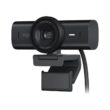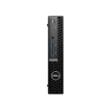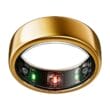Table of Contents
Key Features of Valve Steam Deck OLED
The Steam Deck OLED is a handheld gaming device that builds upon its predecessor’s design with several notable enhancements:
- Display: It features a 7.4-inch HDR OLED display with a resolution of 1280 x 800. This display is known for its brighter colors, deeper blacks, and an overall larger picture compared to the previous model. Its peak brightness reaches 1,000 nits, enhancing visibility and contrast in various lighting conditions.
- Performance and Connectivity: The device is equipped with a 6 nm APU, offering improved efficiency. The memory has been updated to 6400 MT/s, enhancing latency and power management. Additionally, the Steam Deck OLED includes an updated WiFi/Bluetooth module, offering support for WiFi 6E and Bluetooth 5.3. This allows for faster download speeds, stable online play, and improved connectivity with multiple controllers.
- Battery Life and Charging: The Steam Deck OLED boasts a 30-50% increase in battery life compared to its predecessor, attributed to a larger battery and the more power-efficient OLED display. The battery’s capacity has been improved from 40Wh to 50Wh, and its chemistry allows for faster charging – from 20% to 80% in as little as 45 minutes.
- Cooling and Weight: It’s designed to run cooler and lighter, thanks to a bigger fan and updated thermals. The device is approximately 5% lighter than the LCD model, weighing around 30 grams less.
- Touchscreen and Haptics: The touchscreen’s responsiveness and fidelity have been significantly improved, along with higher fidelity and more consistent haptics. A dedicated Bluetooth antenna has also been added to enhance controller connections.
- Ease of Repair and Modifications: The rear case screws are now Torx™ type, which screw into metal threads, making the device easier to disassemble and reassemble without compromising structural integrity. This change makes internal components more accessible and facilitates easier repairs and modifications.
- Other Improvements: The Steam Deck OLED also features various updates like increased thermal module thickness for better performance, a redesigned trackpad for improved fidelity and edge detection, and enhanced analog stick materials for increased grip and reduced wear. Moreover, it supports using the onboard microphone array simultaneously with the 3.5mm headphones connector.
Overall, the Steam Deck OLED represents a significant upgrade over its predecessor, particularly in terms of display quality, battery life, connectivity, and user experience. These improvements make it an attractive option for gamers seeking a powerful and versatile handheld gaming device.
Specification
| Feature Category | Specifications |
|---|---|
| General | – Price: starts at $549.00 |
| – Model: 512GB OLED, 1TB OLED | |
| Display | – Type: HDR OLED |
| – Size: 7.4″ diagonal | |
| – Resolution: 1280 x 800 | |
| – Refresh Rate: Up to 90Hz | |
| – Peak Brightness: 1000 nits | |
| Performance | – APU: Updated to 6 nm for better efficiency |
| – Memory: Updated to 6400 MT/s | |
| Connectivity | – WiFi: Updated module with support for WiFi 6E |
| – Bluetooth: Added support for Bluetooth 5.3 | |
| Battery | – Capacity: Improved from 40Wh to 50Wh |
| – Battery Life: 3-12 hrs of gameplay (content dependent) | |
| – Charging: Improved chemistry for faster charging (20% to 80% in 45 mins) | |
| Physical Attributes | – Weight: Reduced to ~640g (~5% less than Steam Deck) |
| – Cooling: Bigger fan and updated thermals | |
| Touchscreen and Haptics | – Touchscreen: Improved responsiveness and fidelity |
| – Haptics: Higher fidelity and more consistent | |
| Repair and Modding | – Rear case screws: Torx™ type for easier disassembly |
| – Internal components: More accessible for repair/modding | |
| Additional Features | – Improved sound profile |
| – Redesigned trackpad and improved haptics | |
| – Firmware updates: Improved memory power management and preliminary support for open-source BIOS and EC firmware | |
| – Carrying case and Steam profile bundle included |
Performance
- Design and Portability: The Steam Deck OLED is slightly lighter than its predecessor, which makes a noticeable difference in comfort during prolonged gaming sessions. This weight reduction has been well-received by users who find it easier to hold for extended periods.
- Display Quality: The 7.4-inch OLED display is a major improvement, offering up to 90Hz (or 120Hz in some cases) refresh rate and 1000 nits peak brightness. Users have praised the quality of the display, noting that it significantly enhances the gaming experience with vibrant colors and sharp visuals. The display also supports HDR, adding to its appeal.
- Touchscreen Responsiveness: The touchscreen has been improved, making it more responsive. While this change is subtle, it contributes to a better overall user experience.
- Connectivity: The Steam Deck OLED now supports WiFi 6E and low-latency Bluetooth, which has improved the speed of game transfers from PCs to the Steam Deck. Users have reported noticeable improvements in connectivity and download speeds.
- Performance: While the Steam Deck OLED doesn’t offer a significant boost in raw power compared to its predecessor, it does have faster RAM and an efficient 6nm APU, leading to marginal performance increases in some titles. The device performs well with most modern AAA titles, although it may struggle with certain highly demanding games.
- Battery Life: One of the most crucial upgrades is the improved battery life. The Steam Deck OLED has a 50WHr battery, making it one of the longest-lasting gaming handhelds. Users have reported over four hours of gameplay at 60Hz, with a slight decrease in battery life at higher refresh rates. The device also supports faster charging, which has been praised for reducing battery anxiety.
- Overall User Experience: The Steam Deck OLED is highly regarded for its efficiency and ample storage (starting at 512GB). It’s considered a great upgrade for existing Steam Deck owners or a compelling choice for new users. The overall user experience is viewed as superior to many other gaming handhelds on the market, despite some limitations like the omission of hall-effect joysticks.
In summary, the Steam Deck OLED is well-received for its display, lighter weight, enhanced connectivity, and improved battery life, making it a strong contender in the portable gaming market. While not the most powerful device available, its efficiency, user experience, and price point make it an attractive option for many gamers.
Pros
- OLED Panel: The OLED screen transforms the gaming experience with vibrant colors and high contrast, offering an immersive experience.
- Improved Battery Life: The device has a significantly improved battery life compared to its predecessor.
- Cooler and Quieter: The Steam Deck OLED is cooler and quieter than the Steam Deck LCD model.
- Lighter Weight: The device is 30g lighter than its predecessor, making it more comfortable for extended use.
- Improved Analog Sticks and Trackpads: The analog sticks and trackpads have been improved for a better gaming experience.
- High-Quality Display: The 7.4-inch OLED display with up to 1000 nits peak brightness and HDR support enhances visual quality.
- Enhanced Connectivity: Supports WiFi 6E and low-latency Bluetooth, improving transfer speeds and online connectivity.
- Efficient APU: The 6nm APU enhances battery life and provides decent performance for gaming.
- Good Performance: Capable of running most modern AAA titles smoothly.
- User Experience: Offers an intuitive software experience and ample storage starting at 512GB.
Cons
- Unchanged APU Performance: The performance of the APU remains basically unchanged from the previous model.
- Storage Limitations: The Steam Deck OLED isn’t available with less than 512GB of storage.
- SteamOS Quirks: Users have noted some quirks and limitations in SteamOS.
- Lack of Hall-Effect Analog Sticks: Valve did not include hall-effect sensing analog sticks, a popular modification in gaming handhelds.
Conclusion
The Steam Deck OLED, an upgrade from the original Steam Deck, brings several noteworthy enhancements that make it a compelling choice for portable gaming enthusiasts.
Firstly, it’s important to understand that the Steam Deck OLED is more than just a new version of the original device with an OLED screen. It offers modest performance improvements, making it a slightly faster portable PC. This improvement in performance, although not drastic, contributes to a smoother gaming experience.
The most notable feature, as the name suggests, is the 7.4-inch OLED display, which comes with a 16:10 aspect ratio. This display is not only aesthetically pleasing but also includes etched anti-glare glass, enhancing visibility and comfort during gaming sessions. The OLED panel is lighter, thinner, and more power-efficient than the LCD version found in the original Steam Deck. Additionally, it offers a larger and faster display, making it a significant step up in terms of visual experience.
Beyond the display, the Steam Deck OLED has a longer-lasting battery and better Wi-Fi connectivity. These improvements address two crucial aspects of portable gaming devices: longevity and connectivity, which are essential for uninterrupted gaming sessions and online play.
While the Steam Deck OLED does not fundamentally alter the gaming experience compared to its predecessor, it enhances it significantly in several ways. The improved display, battery life, and connectivity make the gaming experience more enjoyable and convenient.
In summary, the Steam Deck OLED stands out for its superior display, improved performance, enhanced battery life, and better connectivity. These features make it a valuable upgrade for those looking for a premium portable gaming experience.
FAQs
-
What are the key features of the Steam Deck OLED?
The Steam Deck OLED boasts a 7.4-inch OLED display, improved battery life, faster performance, and better Wi-Fi connectivity, enhancing the overall gaming experience.
-
How does the OLED display improve the gaming experience?
The OLED display on the Steam Deck provides more vibrant colors, deeper blacks, and improved contrast, making games look more visually stunning. It’s also more power-efficient and features anti-glare glass for better visibility.
-
Is there a significant performance difference between the original Steam Deck and the OLED version?
While the Steam Deck OLED offers slightly faster performance than the original, the upgrade is not drastic. It provides a smoother gaming experience but doesn’t fundamentally change how games are played.
-
How long does the battery last on the Steam Deck OLED?
The battery life of the Steam Deck OLED is longer compared to the original model, offering extended gaming sessions. However, the exact duration depends on the game’s requirements and brightness settings.
-
Can the Steam Deck OLED connect to external displays or TVs?
Yes, the Steam Deck OLED can connect to external displays or TVs, allowing you to enjoy your games on a larger screen. This feature enhances its versatility as both a portable and home gaming device.





